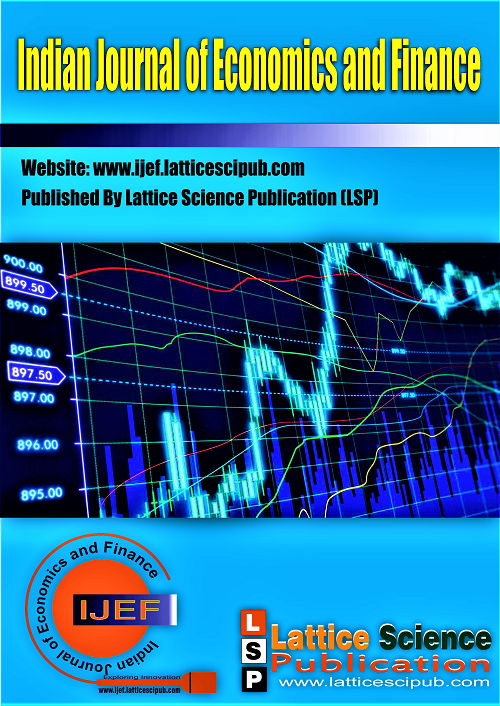Pivotal Role of the Central Grants
Main Article Content
Abstract
In the Indian federal system, the Central Finance Commission is appointed every five years under Article 280 to make recommendations on the distribution of central taxes among the states. Besides, the central government provides grants for various needs to the states under Article 275. To address challenges such as evident economic imbalances, distorted resource distribution, natural disasters, epidemics, and adverse global events, the Government of India has established a robust and resilient grant system. Unlike the central share of taxes, the central government imposes selected conditions on utilising specific grants. Some states have complained that this affects their fiscal autonomy. However, in many states, by sacrificing the basic tenets of public resource utilisation, stupendous amounts of loans are mobilised in the name of capital investment and diverted to financial extravagance for their political gain, creating fiscal stress in the economy and a high burden for the taxpayers in the years to come. In this context, the role of central grants in the financial status and economy of various states is analysed with the help of simple statistical techniques using budget data. This system is designed to deliver assistance rapidly during crises, supported by a flexible framework that helps states navigate their crisis phases efficiently. At the same time, federal grants are beneficial for achieving sustainable development goals. They encourage states to prioritise projects that emphasise environmental and social considerations and maximise both creative and productive investments. The advantages of grants from the central government extend beyond mere financial assistance; they also strengthen the country’s framework and improve public welfare programs that promote inclusive development for all. Further, these grants empower states and help them fully leverage the benefits of a cooperative federal structure. This article analyses the goals of central grants, focusing on practicality and effectiveness.
Downloads
Article Details

This work is licensed under a Creative Commons Attribution-NonCommercial-NoDerivatives 4.0 International License.
How to Cite
References
Fifteenth Finance Commission. Finance Commission in COVID Times: Report for 2021-26, Volume I. Government of India (Oct. 2020). https://fincomindia.nic.in/commission-reports-fifteenth
Reddy, Y. V., and G. R. Reddy. Indian Fiscal Federalism. Oxford UP, (2019). https://global.oup.com/academic/product/indian-fiscal-federalism-9780199493623?cc=in&lang=en&
Reserve Bank of India. State Finances: A Study of Budgets of 2024–25 (2024). https://www.rbi.org.in/Scripts/AnnualPublications.aspx?head=State+Finances+%3a+A+Study+of+Budgets
Mohanty, B., editor. Centre-State Relations in Finance and Development. Arjun Publishing House, (2022). https://indcat.inflibnet.ac.in/
Government of Kerala, Finance Department. State Budget Documents. Various years. https://finance.kerala.gov.in/budget-documents/
Bhatia, H. L. Public Finance. Vikas Publishing House, (2020). https://vikaspublishing.com/
Sindhu, S., et al. “Fiscal Federalism and States’ Economic Growth in India—An Analytical Study.” Indian Journal of Science and Technology, vol. 9, no. 48, (2016). http://dx.doi.org/10.17485/ijst/2016/v9i48/105731
Government of India, Finance Department. Budget Documents. Various years. https://www.indiabudget.gov.in/doc/
Editor. “COVID-19 Crisis and the Centre–State Relations: Centralisation of Powers and Blaming the States Cannot Go Together.” Economic & Political Weekly, vol. 56, no. 17 (2021).
https://www.epw.in/journal/2021/17/editorials/covid-19-crisis-and-centre-state-relations.html
Rangarajan, C., and D. K. Srivastava. Reforming India’s Fiscal Transfer System: Resolving Vertical and Horizontal Imbalances. Working Paper No. 31/2008, Madras School of Economics (Apr. 2008) http://www.mse.ac.in/pub/wp2008_31.pdf
Fourteenth Finance Commission. Report of the Fourteenth Finance Commission (2015-2020). Government of India (2014). https://fincomindia.nic.in/ShowContentOne.aspx?id=28&Section=1
Kotasthane, Pranay, and Varun K. Ramachandra. “Karnataka's Changing Fiscal Landscape: Finances after FFC.” Economic & Political Weekly, vol. 51, no. 33 (2016) : https://www.epw.in/system/files/pdf/2016_51/33/Karnatakas_Changing_Fiscal_Landscape.pdf
Government of India, Department of Finance, Economic Survey. Various years. https://www.indiabudget.gov.in/economicsurvey/doc/eschapter/echapmain.pdf
Chakraborty, Pinaki, and Manish Gupta. “Evolving Centre–State Financial Relations: Role of the New Framework for Grants.” Economic & Political Weekly, vol. 51, no. 16 (2016). : https://www.epw.in/system/files/pdf/2016_51/16/Centre-State_Financial_Relations.pdf
Thirteenth Finance Commission. Report of the Thirteenth Finance Commission (2010-2015). Government of India (2010) https://fincomindia.nic.in/ShowContentOne.aspx?id=26&Section=1
Jacob, Jose. “For the Information of the Central Finance Commission.” Kalakaumudi Weekly, vol. 40, no. 90, (2014), Thiruvananthapuram. : https://www.kalakaumudi.com
Agrawal, Pankhuri. “COVID-19 and Dwindling Indian Federalism.” Economic & Political Weekly, vol. 55, no. 26-27 (2020). https://www.epw.in/journal/2020/26-27
Ranamagar, U. B., & Upadhyaya, N. R. (2022). Remittances and Economic Growth: A Causality Analysis for Nepal. In Indian Journal of Economics and Finance (Vol. 2, Issue 2, pp. 25–33). DOI: https://doi.org/10.54105/ijef.b2523.112222
Usmanova, A. A., & Usmanov, S. A. (2019). Key Role of Education in the Framework of Achieving the Goals of Sustainable Economic Development. In International Journal of Management and Humanities (Vol. 4, Issue 3, pp. 43–45). DOI: https://doi.org/10.35940/ijmh.a0439.114319
Bharali, Dr. P. (2020). Relation of Economic Growth and Macro Economic Variables. In International Journal of Recent Technology and Engineering (IJRTE) (Vol. 9, Issue 1, pp. 220–225). DOI: https://doi.org/10.35940/ijrte.f9504.059120
Twumasi-Ankrah, S., Pels, W. A., Arthur, D., & Danquah, D. K. (2020). Modeling the Effect of Climate Change and Economic Growth on food Security Indicators in Ghana. In International Journal of Innovative Technology and Exploring Engineering (Vol. 9, Issue 8, pp. 909–917). DOI: https://doi.org/10.35940/ijitee.b7265.069820





